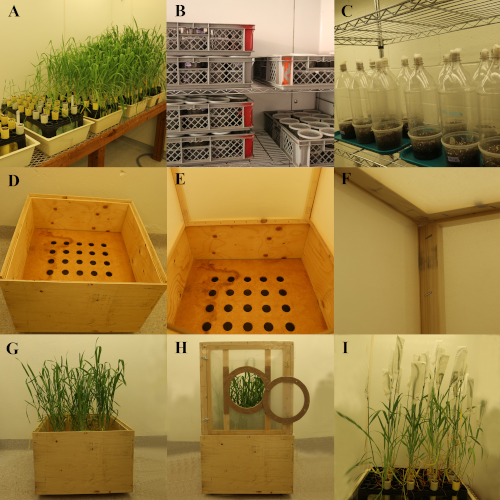
Photo Credit: Bob Lamb, Agriculture and Agri-Food Canada
Project: Mechanisms of Resistance to Wheat Midge in Wheat Germplasm
The orange wheat blossom midge, Sitodiplosis mosellana (Géhin) (Diptera: Cecidomyiidae), is an established insect pest in most wheat-producing regions of the world. Damage caused by larval feeding on kernels can reduce crop yields and lower the grade of harvested grain. The only resistant gene available to control this pest provides savings estimated in $60 million dollars per year in Western Canada. Therefore, it is important to study additional resistant genes and management practices that can be used to reduce its agronomic and economic impact. The main goals of this study are to determine volatile semiochemicals emitted from different lines (resistant vs. susceptible) of wheat for oviposition deterrence by S. mosellana and to assess the responses of wheat midge to wheat panicle volatiles using olfactometer bioassays.
Hypotheses
- Attraction of female S. mosellana is mediated by volatile semiochemicals emitted from wheat spikes at appropriate growth stages.
- Certain headspace volatile compounds extracted from the wheat panicle will be attractive to female S. mosellana.
Wheat Midge Life Stages

Photo Credit: Bridget White
Wheat Midge Rearing Protocol
Weeraddana, C., Wise, I., Lamb, R., Wolfe, S., Wist, T., McCartney, C., Smith, M., and Costamagna, A. (2021). A laboratory method for mass rearing the orange wheat blossom midge, Sitodiplosis mosellana (Diptera: Cecidomyiidae). The Canadian Entomologist, 153(6), 828-836. doi:10.4039/tce.2021.46

Photo Credit: Chaminda Weeraddana
Laboratory Equipment used in Wheat Midge Experiments
Verticle Y Tube Olfactometer
Photo Credit: Chaminda Weeraddana
Gas Chromatography-linked Electroantennography and Agilent 8890 Gas Chromatography coupled Flame Ionization Detector
Photo Credit: Chaminda Weeraddana
Markes TC-20 Tube Conditioner
Photo Credit: Chaminda Weeraddana
